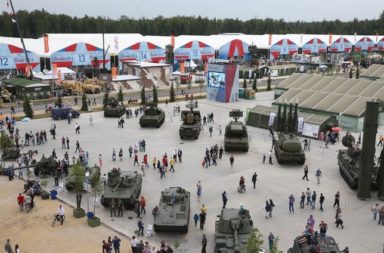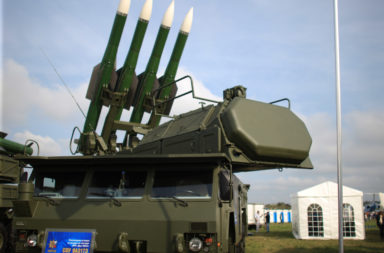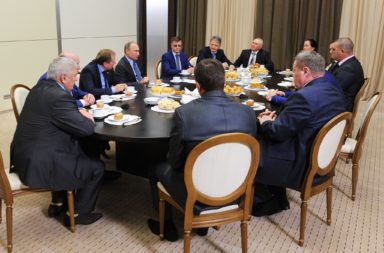It is becoming clear that Armenia is being used by Russia for its anti-Western plans in the Caucasus region and beyond. This became possible following Armenia’s decision to suddenly suspend the process of European integration on September 3, 2013 and declare its plans to join the Russia-led Eurasian Union. Amid weakening ties with the EU, Armenia is allowing Russia to flex its muscles at NATO and its military-political partners in the region.
The first days of July 2015 witnessed an unplanned military drill intended to test the combat readiness of Russian military contingent in Armenia consisting of the 102nd base and aircrafts stationed in Gyumri and the Erebuni airfields (see the attached map). According to the statement released by the Russian Southern Military Command, in parallel with conducting drills the base units “will be put on high alert and told to conduct unplanned exercises at two shooting ranges in central Armenia”.
Apparently, these actions have been implemented by Russia in response to NATO’s joint drill “Agile Spirit 2015” that has begun on the Georgian Vaziani base (see the map), combining troops of Georgia, the US, Bulgaria, Lithuania, Romania and Latvia. The joint exercise was held in accordance with the “Substantial Package” framework that was offered to Georgia during the Wales Summit of NATO in 2014 in order to “advance Georgia’s preparations towards membership in the Alliance”.
In general, Russian military activity in Armenia has been growing steadily in the face of mounting tension between the West and Russia, ranging from periodic exercises on the Russian 102nd base to regular joint drills within the Collective Security Treaty Organization (CSTO) framework.
The Russian base in Gyumri and the adjacent airfield were set up in Armenia according to a bilateral agreement between Armenian and Russian authorities, initially signed in 1995, and then renewed by the treaty in 2010. The latter extended the deployment of the base up to 49 years. According to this arrangement, Russia committed to protecting Armenia’s south-western borders and modernizing Armenia’s Armed Forces. However, these obligations have been violated at least in spirit via regular delivery of offensive weaponry to Azerbaijan, thus disrupting the military balance between the rival states.
To date, the 102nd military base is the only legally recognized foothold of Russian ground troops in the South Caucasus. The overriding objective of Moscow is to maintain its political-military influence on Yerevan. It is in this context that the base is likely serving as a tool for blackmailing Armenia, rather than a factor for challenging/containing Turkey’s or NATO’s influence in the South Caucasus. In addition, the base may also serve as a military-political lever for limiting Georgia’s NATO aspirations.
Regarding Georgia, there is a common understanding that the crisis in Ukraine has galvanized the US and NATO into boosting defenses along NATO’s eastern edge, where the enhancement of Georgia’s military and political security seemed crucial. Georgia’s leadership eyes the upcoming Warsaw Summit in July 2016, where it hopes the country will join NATO. Despite divergence of opinion within the Alliance related to its enlargement, and against the backdrop of the recent incident with moving administrative border fence inside the Georgian territory, Georgia’s security is on the strategic agenda of NATO.
Not surprisingly, Moscow wants to have a say in the degree of Georgia’s integration with NATO and relies on its military base in Armenia to achieve this objective.[1] Yet, these hopes are unlikely to materialize. On the one hand, Georgia is the only state in the South Caucasus that shows complete solidarity with the West, despite the fact that it is lacking Article 5 protection of the Washington treaty and explicit security guarantees from NATO. On the other hand, Crimea’s illegal annexation by Russia (which has inherently disrupted the military-political balance of power in the Black Sea) enhanced the significance of Georgia for NATO. Seeking to re-evaluate its functions and objectives in light of Russia’s revisionist policy, NATO is at the stage of elaborating on how to effectively bolster the security of military allies in Eastern Europe and military-political partners within the Euro-Atlantic partnership.[2]
In turn, the Russian-Armenian relations leave much to be desired. The deterioration of these relations from a strategic point of view may significantly affect Moscow’s influence in the region by pushing Russia out from the military-political life of the Black Sea and the South Caucasus. To that end, Russian policymakers try to keep a tight grip on Armenia, largely using the Gyumri base as a containing factor against Armenia’s drifts toward the West.
At present, the main segment of Armenian society continues to think that the Russian 102nd base is there to prevent Turkey’s incursion into Armenia in case of a military conflict between Armenia and Azerbaijan. This is a result of Russia’s deception, intending to keep alive the Armenian concern about the Turkish threat. This (imaginary) Turkish threat effectively shields Russia’s policy and military presence in Armenia from any criticism on the ground. However, the Russian propaganda in Armenian goes farther in an attempt to fuel fear and paranoia about (imaginary) Turkish and (real) Azerbaijani threats, which managing to entrench an antipathy toward NATO.[3]
There is a firm understanding in Moscow that Armenia is lacking any reason to oppose Russia’s interests in the South Caucasus. However, Moscow cannot afford to ignore even a minor act of cooperation between Armenia and the West, which may inherently diminish Russia’s influence on Armenia. Simultaneously, the Kremlin perceives Armenia as unviable. Hence each attempt of Armenia to drift toward the West is deemed by Moscow as a hostile advance of the West. The only acceptable option in the eyes of Russian leadership regarding Yerevan is to prevent Armenia from integrating with NATO, instead turning it into an adversary of NATO’s regional allies. Therefore, it comes as no surprise that Moscow wishes to see Armenia as a fully subordinated regional ally rivaling not only with Azerbaijan but also with Georgia.
To conclude, the existence of the Russian 102nd military base provides extensive room for Russia’s interference in Armenian policy, being an effective leverage against Armenia. Furthermore, it poses a threat for NATO’s interests in the Black Sea, raising tensions over Georgia. Nevertheless, it is unlikely that Russia will still able to destabilize the situation within Georgia and the frequent military drills in Armenia may be a pursuit of Moscow to cover Russia’s geopolitical withdrawal in the face of sanctions amid global pressures on Ukraine. Russia may embark on maneuvers through CSTO in Armenia in the future likely as a “counterweight” to military drills that NATO may hold in Georgia. To justify this, the Russian leadership has set an idea in motion that the 102nd military base will be directly involved in the defense of Armenia in case of aggression against the latter. This idea is by now forgotten and the fulfillment of Russia’s security guarantees to Armenia seems doubtful, amid Russia’s continuous alienation from the European geopolitical scene.
[1] Russian officials frequently declare that the comprehensive package between Georgia and NATO poses a threat for them. Moscow prefers to hear Yerevan express the same view, which could create a foundation for Russian interference in Georgia.
[2] The active presence of NATO’s military fleet in the Black Sea and the plans to fortify Romanian and Bulgarian naval capacities have somewhat impeded Russia’s further expansion into the Black Sea. Thus the role of Georgia as potentially deterring Russia in South-Eastern Europe may be important for NATO. To this end, the upcoming opening of NATO’s Training Base and Joint Evaluation Center in Georgia, along with conducting investigations into the Georgian Poti port by joint experts, is a visible sign of more NATO presence in Georgia. Given the recent agreement between Ukraine and NATO to rebuild Ukrainian naval infrastructure, the Georgian naval infrastructure in Poti may become the convenient and primary element in the security system supported by NATO in the Black Sea. Thus, it appears that Tbilisi is on the way to becoming a NATO member and in the meantime can be viewed as a steadfast political ally of the Alliance.
[3] It is common knowledge now that the Soviet military command had maintained a sophisticated military infrastructure to counter NATO (mostly Turkey) in the South Caucasus. This infrastructure comprised a range of airfields connected with the set of different divisions and corpuses based in Georgia, Azerbaijan and Armenia. Following the collapse of the Soviet Union, only the 102nd military base as minor fragment remains from the mentioned infrastructure. In reality, that is why the facilities of the Russian base are considered not functional hence could not assume the security guarantor role for Armenia. The circumstances is that the Russian 102nd base, because of its doubtful discipline and series of crimes, mass killings of civilians and corruptive abuses means that it is unfit for real combat operations creating a real prospect of a menace for Armenian citizens.




